Restoration of Australian Aboriginal Ochre Paintings
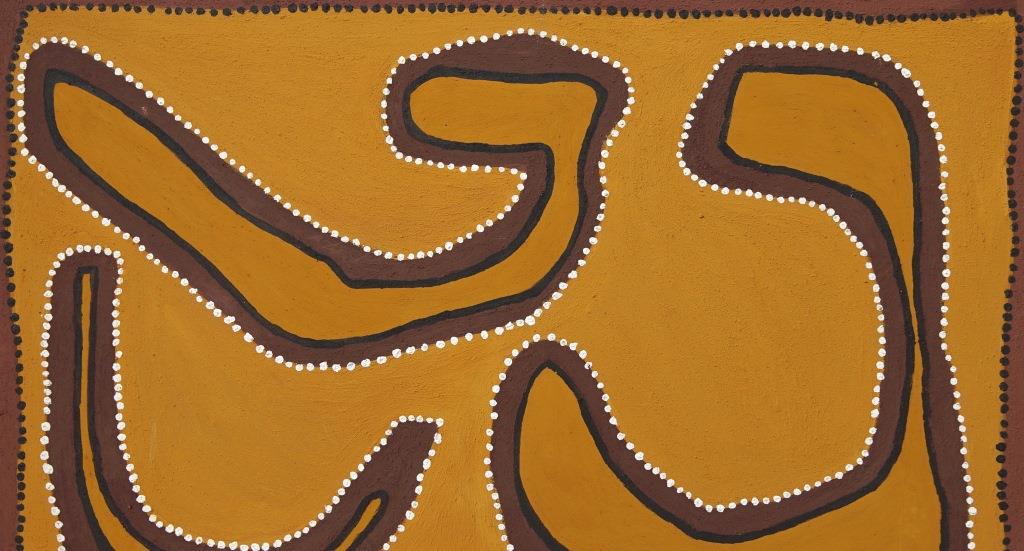
Gordon is a fine art restoration specialist. He is both a restorer and collector of Australian Aboriginal ochre artworks. In this interview with David Wroth he discusses his approach to working with ochre paintings.
Restoration of Ochre Paintings
Q. You've worked on ochre paintings in the Aboriginal art world for more than four decades. What do you find is interesting about ochre paintings?
They're challenging. The thing about ochres is you have to let go of the European way of thinking about and working with colour. Ochres, as they are mixed up and applied can be fairly transparent. To carry out restoration work, I need to know about the artists, the area they are from and how they work with the medium.
In European art traditions, you choose a bright blue, and when it dries, it's bright blue. It is different with ochre. If you put apply a white ochre, it starts off transparent, and then it will dry to a level of white. You have to be able to predict this level. You only learn that by repeatedly working on art by that painter and understanding where they're coming from in their approach.
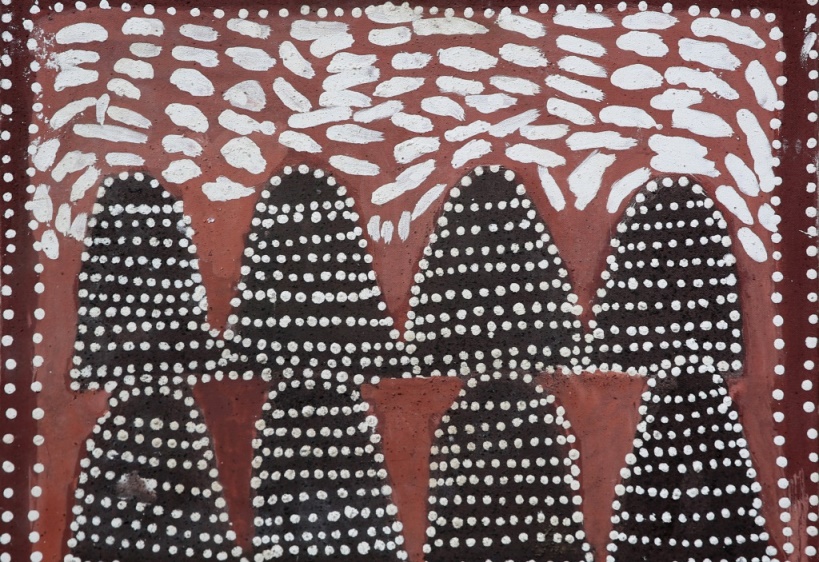
Sources of Ochre and Ways of Working
Q. Do different artists have their types of ochre colours? Are they secretive about the locations where they find ochres?
Absolutely. They all have their own sources of ochre. Queenie McKenzie, for example, she almost exclusively used to collect her ochres from Texas Downs. So, yes, artists have their sources.
Then they also have their method of working with ochre. And they will have their own designs on top of that. This is certainly the case in Arnhem Land where the designs all have a type of copyright. The way lines and dots are set out belongs to individual artists. The way ochre is used is like that as well.
As an art restorer, I need to understand what I'm working on. White ochre is not simply white ochre. Yellow ochre is not simply yellow ochre. I have to understand where the ochre is from and how the artist used it to get any restoration right.
Shirley Purdie, Queenie McKenzie are two artists I can say use interesting techniques when applying their ochre. In the case of Queenie, with her pinks - I've had to learn about the way she mixed red and whites. In the case of an artist like Shirley, there is a distinctive approach to the yellows.
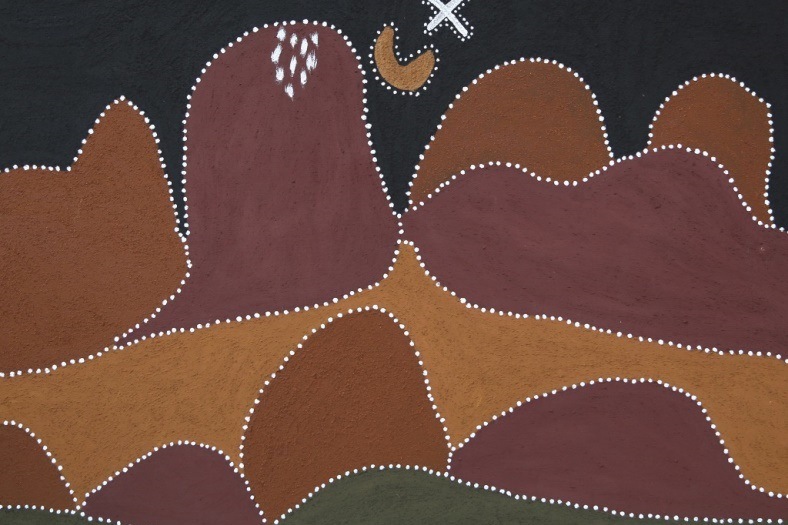
PVA Medium
Q. We talked earlier that PVA as a medium that was introduced in the Aboriginal communities some decades ago. Can you give me some information about how that changed things?
Oh, it dynamically changed it. When I originally started working in this area, I was trying to replicate the same resins and grass starch base materials that the particular Indigenous groups were using. In the case of Rover Thomas, he had the Kalumburu resins. They're leguminous, small, starch-based parts of root material that are made and liquefied into a medium for painting. These works were quite ephemeral. They also had some beauty about them, which we don't see so much today.
The Use of PVA
PVA provided artists with an easily accessible, very strong, reliable medium. I can fully understand the appeal of it. I don't have an issue; I don't think there's an ethical issue with the use of PVA in traditional ochre painting. All of these things are in context.
One of the things, I think the viewer identifies the ochre paintings, is that they're matt, without any sheen. They present as matt and are bright and strong in colour. The level of PVA used as a medium can affect the finish, and there have been one or two times where I've seen paintings that have been done with ochre and PVA which have ended up with a bumper car shine to them.
PVA is a very strong medium. It does create some technical issues when you're repairing these works because you've got to know exactly the level of PVA and other materials that have been used as a medium by the artist.

Q. There are other places outside Australia where ochre is used by Indigenous artists. Do they find their way to you occasionally as well?
I've worked on a range of material. Ochre's been around for a long time, all over the world. In fact, some of the geophysical names for the various iron oxides, which we call ochre here, have been drawn from Latin and Greek origins. Yellow ochre, geologists will tell you, is limonite. That was used in Cypress well before Christ thousands of years ago. The Greek word for limonite means meadow and refers to the colour yellow because of the bright yellow plains of flowers that you see on the Greek islands.
There's enormous history behind the use of ochre. I've worked in Melanesia, Vanuatu, Flores and the Indonesian archipelago and with New Guinea art. Ochres were used extensively in all these places.
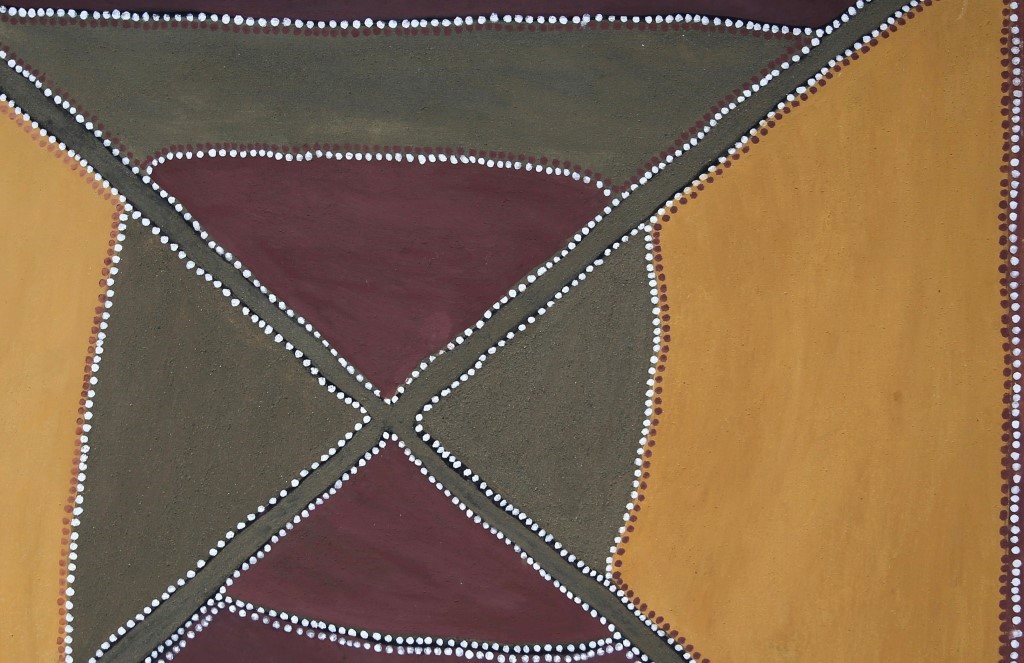
The Spirit of Ochre Painting
Q. When people come into the gallery and first see ochre paintings, they react to the earthy surface of it and the matt colour of it. There's something very ingrained about that earth look. Do you think there's something else about the spirit of those ochre paintings in the Indigenous world?
Absolutely. I'm an unabashed fan of this sort of material. I collect this style of Indigenous art. They're about story, and their history, and about their interaction with the community. I find this work exciting.
Rover Thomas
Probably the most prominent and well-known Aboriginal artist working in ochre was Rover Thomas. I understand that you worked towards the exhibition that went to the Venice Biennale in 1990. What can you tell us about Rover and his attitudes and the way he used ochre?
He was just a wonderful, wonderful man. They call him the sort of patriarch of that type of ochre painting. Maybe Paddy Jamanji would also qualify for that title.
I worked on all of Rover's works that were sent to the Venice Biennale. I had the privilege and pleasure of spending some afternoons with Rover when he was in Perth. He taught me a lot. Number one, he taught me that he was producing stories about unfortunate historical events that occurred during interactions between white people and his own people.
He also taught me not to be too precious about the art itself. I asked Rover what I should do if ever the majority of the dots, the white dots on the perimeter of his major works, were ever lost. I explained that in a pure museum sense, you'd say, "Well we consolidate and preserve the remaining material there, but we don't do anything about selectively replacing the dots, repairing the dots." Rover chewed me out on this argument. He says, "No," he said, "it's my painting, I don't want it to look like something I didn't do." That was quite a surprise.
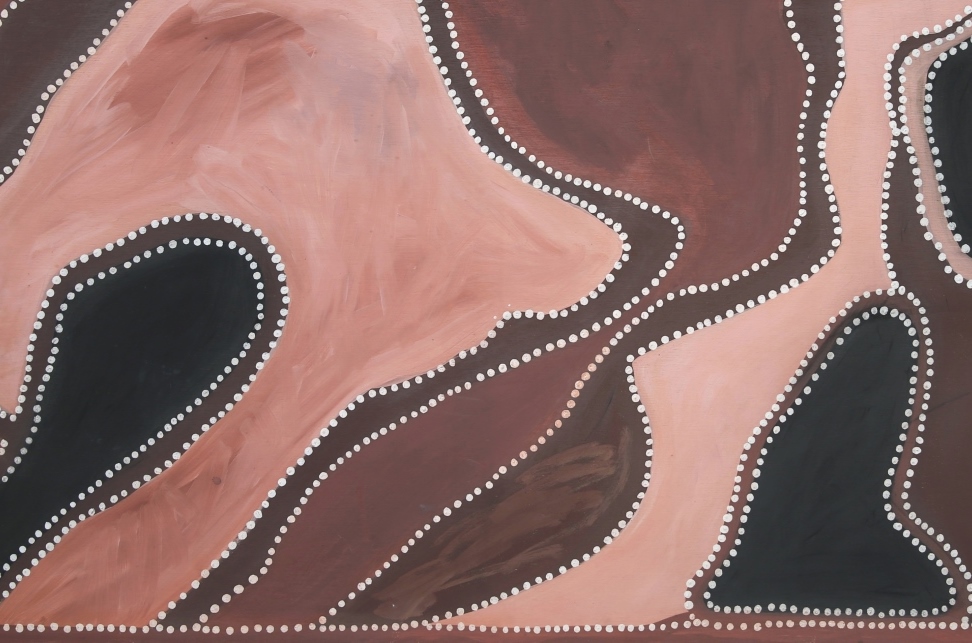
Rover's comments gave me a lot of reassurance so that I could try to come to a compromise with restoration work. These paintings aren't images; they're stories, they're there to tell you something. If the work is no longer communicating the story it was intended to tell because so much of it's been lost, flaked off or been damaged, then this needs to be addressed. Otherwise, it goes from being a vibrant story to becoming an archival remnant on the wall.
I try to reach a compromise where we at least restore the integrity of the item so that the artist, if he was alive, would come back and say, "Oh yeah, I'm happy with that."
Where I can, I try to get in touch with the artist or their descendants. Certainly, when I've been working on Arnhem Land art, I've been talking to lots of different artists from Yirrkarla and some from Maningrida. This consultation gives me a handle on whether they're comfortable with what I'm going to do. More often than not, they say, "No, I don't want to have half of my image missing. Could you please redo it how it was?" I always work with the artist and try to understand what their wishes are.
Ochres Trading
There are between 300 and 400 different types of ochres from all over Australia. Ochres were traded so that ochres could be all over the place. You might find them well beyond the location where they were originally dug up.
Blue Ochre
I've had to repair one or two paintings with a blue ochre, and I thought, "I've never known a blue ochre." I started researching the chemistry side to see if it was a copper-based compound. In fact, it was Blue-O, which was an early laundry additive. The artists would collect this, and grind it and it gives you a sort of pale grey-blue.

